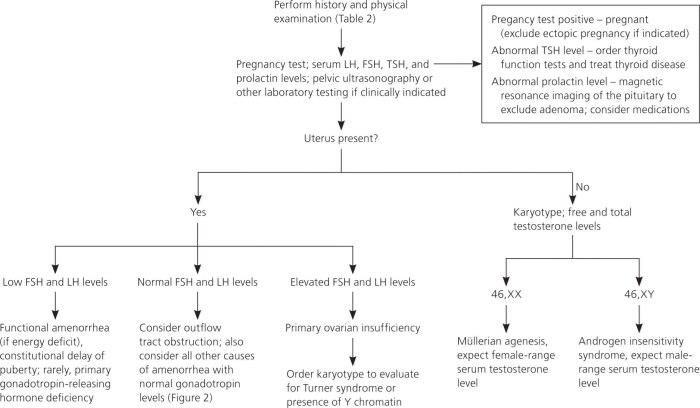How to delay your period? This in-depth guide explores the science behind menstruation, various methods for potential delay, and crucial lifestyle considerations. We’ll delve into hormonal processes, birth control options, and even natural approaches, but always remember the importance of professional medical advice.
Understanding your menstrual cycle is key. This guide provides a detailed overview of the hormonal fluctuations that govern your cycle, including common causes of irregularities. We’ll examine methods like birth control pills, explore the role of lifestyle factors, and discuss potential risks and side effects.
Understanding the Menstrual Cycle
The menstrual cycle is a complex interplay of hormones that governs a woman’s reproductive health. Understanding this intricate process is crucial for recognizing irregularities and maintaining overall well-being. From the initial follicular phase to the final menstrual flow, each phase holds key hormonal shifts that dictate the body’s readiness for potential pregnancy.The menstrual cycle is not a static event; it’s dynamic, influenced by various internal and external factors.
This intricate dance of hormones and bodily changes is a testament to the remarkable capabilities of the human body. This guide delves into the detailed mechanisms behind menstruation, providing a comprehensive understanding of the hormonal fluctuations and potential influences on its regularity.
Hormonal Processes in Menstruation
The menstrual cycle is primarily regulated by a delicate balance of hormones, primarily estrogen and progesterone, produced by the ovaries. These hormones orchestrate the cyclical changes in the uterus, preparing it for potential pregnancy. The interplay of these hormones is complex and intricate, influencing the uterine lining’s growth and shedding. The pituitary gland also plays a vital role by releasing hormones that stimulate the ovaries.
Menstrual Cycle Phases
The menstrual cycle is typically divided into four phases, each characterized by distinct hormonal fluctuations and corresponding symptoms. These phases are crucial for understanding the body’s preparations for potential conception.
| Phase | Hormone Levels | Symptoms | Duration (Average) |
|---|---|---|---|
| Menstrual Phase | Estrogen and progesterone levels are at their lowest. | Bleeding, cramping, fatigue, irritability, bloating. | 3-7 days |
| Follicular Phase | Estrogen levels rise as follicles mature in the ovaries. | Increased energy levels, clearer skin, ovulation-related discomfort, possible mood swings. | 7-10 days |
| Ovulatory Phase | Estrogen peaks, triggering ovulation (release of an egg). | Ovulation pain, possible spotting or discharge, increased libido. | 1-2 days |
| Luteal Phase | Progesterone levels rise to prepare the uterine lining for a potential pregnancy. | Bloating, breast tenderness, fatigue, possible mood changes, changes in cervical mucus. | 14 days |
Factors Influencing Menstrual Cycle Regularity
Numerous factors can impact the regularity of a woman’s menstrual cycle. These factors range from lifestyle choices to underlying medical conditions.
Trying to delay your period can be tricky, and sometimes it’s not as simple as just taking a pill. While some methods focus on lifestyle changes, it’s crucial to be mindful of potential side effects like those associated with consuming excessive protein. For instance, understanding the possible side effects of too much protein side effects is important if you’re considering any dietary approaches to delaying your period.
Ultimately, it’s best to talk to a doctor before making any significant changes to your diet or lifestyle, especially if you have any underlying health conditions.
- Stress: Chronic stress can disrupt hormonal balance, leading to irregular periods. For example, a significant life event like a job change or moving can disrupt the menstrual cycle, resulting in delayed or missed periods.
- Weight Fluctuations: Significant weight gain or loss can affect hormone production, impacting the regularity of the cycle. Extreme dieting or excessive exercise can also disrupt the menstrual cycle. This is especially noticeable in athletes who engage in rigorous training.
- Underlying Medical Conditions: Conditions such as polycystic ovary syndrome (PCOS) or thyroid disorders can disrupt the hormonal balance, causing irregular periods. In these cases, appropriate medical intervention is crucial.
- Medications: Certain medications, including some birth control pills, can alter hormone levels, impacting the menstrual cycle.
- Lifestyle Factors: A poor diet, lack of sleep, and excessive exercise can all contribute to irregular periods. Proper nutrition and adequate sleep are essential for maintaining hormonal balance and menstrual regularity.
Common Reasons for Irregular Periods
Irregular periods can stem from various factors, both physiological and lifestyle-related. Identifying the root cause is key to addressing the issue effectively.
- Stress: Stress hormones can disrupt the delicate balance of hormones responsible for regulating the menstrual cycle.
- Poor Diet: A diet lacking essential nutrients can impact hormone production, leading to irregularities.
- Excessive Exercise: Intense or excessive exercise can disrupt the body’s hormonal balance, affecting menstrual regularity.
- Weight Changes: Significant weight fluctuations, whether gain or loss, can affect hormone levels, leading to irregular periods.
Methods to Potentially Delay a Period
Delaying your period is a complex issue with various methods, each with its own set of advantages and disadvantages. It’s crucial to understand that these methods don’t eliminate the menstrual cycle; they merely postpone its natural progression. Consulting with a healthcare professional is essential to determine the most appropriate and safe approach for your individual needs. They can assess your overall health, medical history, and lifestyle to make informed recommendations.
Birth Control Pills
Birth control pills are a common method for potentially delaying periods. They work by suppressing ovulation, the release of an egg from the ovaries. Without ovulation, the body doesn’t experience the hormonal changes that trigger the shedding of the uterine lining, effectively postponing menstruation. Many types of birth control pills are available, each with a different dosage and composition of hormones.
Hormonal IUDs
Hormonal intrauterine devices (IUDs) are another option for potentially delaying periods. These devices release hormones directly into the uterus, suppressing ovulation and the thickening of the uterine lining. This leads to a reduced or absent menstrual flow, potentially delaying or even eliminating periods entirely for some individuals. The long-term effects and efficacy of hormonal IUDs vary from person to person, and careful consideration is needed.
Emergency Contraceptives
Emergency contraceptives, often referred to as “morning-after pills,” can potentially delay a period. These pills work by preventing or delaying ovulation, similar to birth control pills. They are primarily used for preventing pregnancy after unprotected sex, but they can sometimes also delay the next menstrual cycle. It’s essential to note that emergency contraceptives are not a reliable method for consistent period postponement.
Other Methods
Some alternative methods, like herbal remedies or dietary changes, are sometimes touted as ways to delay periods. However, there’s limited scientific evidence supporting their effectiveness and safety. These methods should not be considered reliable substitutes for proven medical interventions. It’s crucial to consult with a healthcare professional before trying any alternative approaches.
Comparison of Delay Methods
| Method | Effectiveness | Potential Side Effects | Suitability |
|---|---|---|---|
| Birth Control Pills | Generally effective, but requires consistent use. | Mood changes, weight fluctuations, breast tenderness, headaches. | Suitable for those seeking reliable period control, but requires discipline in taking the pill. |
| Hormonal IUDs | Highly effective in suppressing menstruation. | Spotting, cramping, hormonal imbalances. | Suitable for those seeking long-term period control, but with potential long-term side effects. |
| Emergency Contraceptives | Can potentially delay, but not reliable for consistent use. | Nausea, headaches, abdominal pain. | Suitable only for occasional use, not a long-term solution. |
| Other Methods | Limited scientific evidence of effectiveness. | Potential for unknown side effects, interactions with medications. | Not recommended as a primary method for delaying periods. |
Risks and Considerations
Delaying periods can present certain risks. Disruptions to the natural menstrual cycle can sometimes indicate underlying health issues. Prolonged absence of periods can also impact bone health and overall well-being. Regular check-ups with a healthcare provider are crucial to monitor any potential complications or side effects. It’s vital to be aware that attempting to delay periods without professional guidance can have unforeseen consequences.
Lifestyle Factors and Period Timing: How To Delay Your Period

Our bodies are complex systems, and many factors can influence the timing of our menstrual cycles. Beyond the typical hormonal fluctuations, lifestyle choices play a significant role in regulating this natural process. Understanding how stress, diet, exercise, and sleep impact our cycles can help us better manage our overall health and well-being.
Stress and the Menstrual Cycle
Chronic stress can disrupt the delicate hormonal balance necessary for a regular menstrual cycle. The body’s response to stress often prioritizes survival functions, relegating less crucial processes like reproduction to a lower priority. This can manifest as irregular periods, missed periods, or even prolonged absence of menstruation. Studies have shown a correlation between high stress levels and cycle irregularities.
For example, individuals experiencing significant life changes, such as moving, job loss, or relationship difficulties, may encounter cycle disruptions.
Diet and Menstrual Timing
Diet significantly impacts hormonal health, and consequently, the menstrual cycle. A diet deficient in essential nutrients can lead to hormonal imbalances. A balanced diet rich in fruits, vegetables, whole grains, and lean protein supports healthy hormone production and overall well-being, which in turn positively impacts the menstrual cycle. Conversely, a diet high in processed foods, refined sugars, and unhealthy fats can contribute to hormonal irregularities and potentially affect period timing.
Extreme caloric restriction or disordered eating patterns can also disrupt the cycle.
Exercise and Period Regulation
Regular exercise is generally beneficial for overall health, including the menstrual cycle. Moderate-intensity exercise can help maintain a healthy weight and balance hormones. However, extremely intense or prolonged exercise, particularly without adequate calorie intake, can sometimes disrupt the menstrual cycle. This is often seen in athletes who train intensely or maintain very low body weights. In these cases, the body may not have enough resources to maintain both the training demands and the reproductive cycle, leading to irregularities.
Sleep and Hormonal Balance
Sleep plays a crucial role in regulating hormones, including those involved in the menstrual cycle. Adequate sleep allows the body to repair and restore, contributing to a balanced hormonal system. Chronic sleep deprivation can disrupt the delicate hormonal balance, impacting the timing and regularity of menstruation. Sleep deprivation can also cause stress hormones to rise, leading to further disruption.
Aiming for 7-9 hours of quality sleep per night can contribute to a more regular menstrual cycle.
Dietary Changes for Potential Period Influence
Dietary modifications can potentially influence the timing of your period. Increasing consumption of nutrient-rich foods like fruits, vegetables, and lean protein can help maintain a healthy hormonal balance. Conversely, limiting or eliminating processed foods, refined sugars, and excessive caffeine can be beneficial. It’s important to consult with a healthcare professional or registered dietitian to determine the most suitable dietary changes for your individual needs and health conditions.
Lifestyle Adjustments for Potential Period Regulation
- Maintain a balanced and nutritious diet rich in fruits, vegetables, and lean protein. Limit processed foods, sugary drinks, and excessive caffeine intake.
- Prioritize regular exercise, aiming for moderate-intensity workouts. Avoid extreme or prolonged exercise without adequate calorie intake.
- Ensure adequate sleep (7-9 hours per night) for optimal hormonal balance and to reduce stress.
- Manage stress effectively through relaxation techniques, mindfulness practices, or stress-reducing activities.
- Consider consulting with a healthcare professional or registered dietitian for personalized advice on managing your menstrual cycle and overall health.
Medical Conditions and Period Irregularity
Understanding your menstrual cycle is crucial for overall well-being. However, various medical conditions can disrupt this natural rhythm, leading to irregular periods. These irregularities can stem from hormonal imbalances, certain medications, or underlying health issues. This section delves into these potential causes and emphasizes the importance of seeking professional medical advice.Medical conditions, hormonal fluctuations, and medications can all significantly impact the regularity of a woman’s menstrual cycle.
It is vital to remember that this information is for educational purposes only and does not constitute medical advice. Always consult with a healthcare professional for any concerns about your menstrual health.
Hormonal Imbalances
Hormonal imbalances are a frequent culprit behind irregular periods. These imbalances often involve fluctuations in estrogen, progesterone, and other hormones crucial for regulating the menstrual cycle. Conditions like polycystic ovary syndrome (PCOS) are prime examples of hormonal disorders that can disrupt menstruation. Symptoms can vary, from infrequent periods to prolonged or excessively heavy bleeding. Understanding the role of these hormones in the menstrual cycle is vital for comprehending how imbalances can manifest.
Medical Conditions Affecting Menstruation
Several medical conditions can disrupt the normal functioning of the reproductive system, leading to menstrual irregularities. Thyroid disorders, for example, can significantly affect hormone levels, impacting the regularity of periods. Similarly, conditions like premature ovarian insufficiency (POI) can cause early cessation of menstruation. Furthermore, certain autoimmune diseases can indirectly affect the menstrual cycle through their impact on overall health and hormone production.
Medications and Their Impact on Periods
Some medications can interfere with the delicate hormonal balance required for a regular menstrual cycle. For instance, certain birth control pills, especially those with lower hormone doses, may lead to irregular bleeding. Antidepressants and other medications can also disrupt the menstrual cycle in some individuals. The impact of specific medications can vary greatly, highlighting the importance of discussing any potential interactions with a healthcare professional.
Importance of Consulting a Healthcare Professional
Irregular periods can be a symptom of various medical conditions. It’s crucial to understand that self-diagnosing or relying solely on online information can be detrimental. A healthcare professional can conduct a thorough evaluation, considering your medical history and lifestyle, to identify the underlying cause. They can recommend appropriate tests and treatments, ensuring you receive personalized care. Early diagnosis and intervention are key to effectively managing potential issues.
Trying to delay your period? While there are various methods, it’s important to understand your body. Sometimes, after a shower, you might experience itching, which could be related to a number of factors, like the products you used. Learning about these issues, like reasons why you itch after taking a shower , can help you address potential underlying issues that might be impacting your cycle.
Ultimately, understanding your body better is key to managing your period, and delaying it safely.
Comparison of Medical Conditions Affecting Menstrual Cycles
| Condition | Symptoms | Potential Treatments |
|---|---|---|
| Polycystic Ovary Syndrome (PCOS) | Irregular periods, acne, excess hair growth, weight gain | Lifestyle modifications (diet, exercise), medication to regulate hormones |
| Thyroid Disorders | Irregular periods, fatigue, weight changes, mood swings | Medication to regulate thyroid hormone levels |
| Premature Ovarian Insufficiency (POI) | Irregular periods, hot flashes, vaginal dryness, infertility | Hormone replacement therapy, fertility treatments |
| Autoimmune Diseases | Varying symptoms depending on the specific disease, often affecting overall health and potentially affecting periods | Treatment of the underlying autoimmune condition |
| Certain Medications | Irregular bleeding, changes in period length or flow | Consultation with a doctor to adjust medication or explore alternatives |
Natural Approaches to Period Regulation
Natural methods for managing menstrual cycles often involve herbal remedies, dietary adjustments, and lifestyle changes. While these approaches can potentially influence period timing, it’s crucial to remember that they aren’t a guaranteed solution and may not be suitable for everyone. Individual responses vary significantly, and it’s always best to consult with a healthcare professional before making any significant changes to your routine, especially if you have underlying health conditions.Many individuals explore natural remedies to potentially manage menstrual irregularities.
These methods, while not backed by the same rigorous scientific evidence as some pharmaceutical interventions, can play a role in overall well-being and potentially influence menstrual cycles. Understanding how these approaches might interact with your body and any potential risks is key to making informed choices.
Herbal Remedies and Supplements
Many herbal remedies are touted for their potential to regulate menstrual cycles. These include, but are not limited to, various herbs like chasteberry, ginger, and turmeric. Some individuals also use supplements like vitamin B6 and magnesium. These remedies often work by influencing hormonal balance or reducing inflammation.
Dietary Considerations
Diet can significantly impact menstrual regularity. A balanced diet rich in fruits, vegetables, and whole grains can support overall health and potentially contribute to a more stable cycle. Conversely, a diet high in processed foods, sugar, and caffeine may disrupt hormonal balance and lead to irregularities. Maintaining a consistent eating schedule and managing stress levels are also key components in maintaining a healthy menstrual cycle.
Lifestyle Factors
Beyond diet, lifestyle choices play a crucial role in regulating menstrual cycles. Regular exercise, adequate sleep, and stress management are essential for hormonal balance and overall well-being. Maintaining a consistent sleep schedule and incorporating stress-reducing techniques can significantly impact hormonal fluctuations. Physical activity, such as regular exercise, can also influence hormonal regulation.
Popular Natural Remedies for Irregular Periods
Chasteberry is a popular herbal remedy used to manage menstrual irregularities. It is believed to help regulate hormonal imbalances. Ginger is another commonly used remedy, often taken in tea form or supplement form, for its potential anti-inflammatory properties. Some individuals use turmeric for similar reasons.
Comparison of Natural Approaches
| Natural Approach | Potential Benefits | Potential Risks | Supporting Evidence |
|---|---|---|---|
| Chasteberry | Potential to regulate hormonal balance, potentially leading to more regular cycles. | Possible side effects like nausea, headaches, or breast tenderness. May interact with certain medications. | Some studies suggest potential benefits, but more rigorous research is needed. |
| Ginger | Potential anti-inflammatory effects, potentially reducing cramping and discomfort. | Generally considered safe, but high doses may cause digestive upset. | Some studies support its anti-inflammatory effects, but more research on menstrual regulation is needed. |
| Turmeric | Potential anti-inflammatory effects, potentially reducing inflammation associated with periods. | Possible side effects like nausea, diarrhea, or skin reactions. | Research on its effect on menstrual cycles is limited. |
| Dietary Changes | A balanced diet may support hormonal health and overall well-being. | Not all dietary changes are appropriate for everyone. A diet lacking essential nutrients can have adverse effects. | Evidence suggests a correlation between a healthy diet and better hormonal regulation. |
| Lifestyle Changes | Regular exercise and stress management can support hormonal balance and reduce stress. | Overexertion or lack of sleep can disrupt hormonal balance. | Research supports the connection between a healthy lifestyle and menstrual regularity. |
Importance of Seeking Professional Advice
Understanding your menstrual cycle is a journey of self-discovery, but it’s crucial to remember that navigating potential irregularities requires expert guidance. While various methods and lifestyle adjustments can influence your cycle, seeking professional medical advice is paramount for accurate diagnosis and safe management.The human body is complex, and menstrual health is no exception. A healthcare provider possesses the knowledge and tools to evaluate your individual circumstances, rule out underlying medical conditions, and tailor a treatment plan specific to your needs.
Ignoring potential issues or self-treating can lead to complications and delay appropriate interventions.
Potential Risks of Self-Treating Menstrual Irregularities, How to delay your period
Attempting to manage menstrual irregularities without professional guidance carries several potential risks. Misdiagnosis can lead to ineffective or even harmful treatments. For example, a condition mimicking irregular periods could be mistaken for a lifestyle-related issue, delaying proper treatment for a more serious underlying problem. Furthermore, some self-treatments may interact negatively with other medications or health conditions, potentially exacerbating existing problems.
Incorrect use of herbal remedies or supplements can also have unforeseen consequences.
Role of a Healthcare Professional in Diagnosing and Managing Menstrual Issues
A healthcare professional plays a crucial role in diagnosing and managing menstrual issues. They can conduct thorough examinations, order necessary tests (such as blood tests or ultrasounds), and evaluate your overall health to determine the root cause of any irregularities. This holistic approach ensures that any underlying medical conditions are identified and addressed promptly. They can also provide personalized guidance on lifestyle adjustments, dietary recommendations, and other strategies to promote menstrual health and regularity.
Open Communication with a Doctor About Menstrual Health
Open communication with your doctor is essential for effective management of menstrual health. Feel comfortable discussing your concerns, symptoms, and any changes in your cycle. Honest and detailed conversations allow for a comprehensive understanding of your situation and facilitate the development of an appropriate treatment plan. Be prepared to provide information about your medical history, family history, and any medications you’re currently taking.
This detailed information helps your doctor form an accurate picture of your health and tailor treatment accordingly.
Trying to delay your period? Sometimes, a headache or toothache can throw off your schedule. Luckily, over-the-counter dental pain relief options, like those found at otc dental pain relief , can help you manage the discomfort. However, remember that these methods aren’t a guaranteed way to delay your period and should be used cautiously.
“Seeking professional medical advice is critical for accurate diagnosis and safe management of any menstrual irregularities. Never hesitate to discuss your concerns with your healthcare provider.”
Understanding Potential Risks and Side Effects
Delaying your period can seem like a simple solution, but it’s important to understand the potential risks and side effects associated with these methods. While some people experience no issues, others face complications. This section will delve into the potential drawbacks, emphasizing the importance of careful consideration and consultation with a healthcare professional.
Potential Side Effects of Period Delay Methods
Several methods for delaying menstruation can cause various side effects. These can range from mild discomfort to more serious complications. It’s crucial to be aware of these potential issues before attempting any method.
- Headaches and Migraines: Some individuals experience increased frequency or intensity of headaches or migraines when using hormonal methods to delay their period. This can vary in severity, from mild discomfort to debilitating pain. For example, a person experiencing frequent and severe migraines might need to adjust their strategy or seek professional guidance.
- Mood Swings: Hormonal fluctuations can sometimes lead to mood swings. While not everyone experiences this, it’s important to be aware of this potential side effect. Some people might notice irritability, anxiety, or depression. These effects can be significant and require careful monitoring.
- Breast Tenderness: Changes in hormone levels can result in breast tenderness or swelling. This is a common side effect of many hormonal medications and can vary in intensity. Some individuals may experience discomfort, while others may experience more significant pain.
- Bloating and Digestive Issues: Some women report bloating, cramping, or digestive issues, such as nausea or diarrhea, as a result of altering their natural hormone balance. These symptoms can be manageable for some, but others might find them disruptive to their daily life.
- Spotting and Irregular Bleeding: Methods that disrupt the menstrual cycle can sometimes lead to irregular bleeding patterns, such as spotting between periods or prolonged bleeding. This can vary in severity, from light spotting to heavier bleeding.
Risks Associated with Long-Term Use
Prolonged use of methods to delay menstruation can pose significant risks. Consistent interference with the natural menstrual cycle can lead to long-term hormonal imbalances. Understanding these potential risks is critical.
- Hormonal Imbalance: Repeated interference with the natural hormonal cycle can lead to an imbalance. This imbalance can affect various bodily functions, potentially increasing the risk of other health issues. It’s essential to consult with a doctor if you experience prolonged or persistent hormonal imbalance symptoms.
- Increased Risk of Certain Conditions: Some studies suggest a potential link between prolonged hormonal disruption and an increased risk of certain health conditions, such as ovarian cysts or uterine fibroids. It is important to note that this is not definitive, and more research is needed. However, these risks are a cause for concern, especially with long-term use.
- Potential Impact on Fertility: Long-term use of methods that disrupt the menstrual cycle can sometimes affect fertility. While the exact impact varies greatly from person to person, it’s crucial to understand that there might be consequences. Consulting with a healthcare provider is vital to discuss any concerns about fertility.
Importance of Monitoring Health
Regular monitoring of your health is crucial when using methods to delay your period. This includes paying attention to any changes in your body, including mood swings, pain, or unusual bleeding patterns.
- Regular Check-ups: Scheduling regular check-ups with your healthcare provider is essential. This allows for early detection of any potential complications or changes in your health. Regular check-ups are a preventive measure and are crucial for maintaining overall well-being.
- Tracking Symptoms: Keeping a detailed record of any symptoms, including their severity and duration, is beneficial for both you and your doctor. This will help assess any potential issues and adjust strategies accordingly. It also aids in better communication with healthcare professionals.
- Communicating with Your Doctor: Open and honest communication with your doctor is vital. Sharing any concerns or changes in your health is crucial for proper assessment and management. Early detection and proactive intervention are key to maintaining optimal health.
Potential Complications
Delaying menstruation can potentially lead to various complications, ranging from minor discomfort to more serious issues. It’s vital to be aware of these possibilities.
- Ovarian Cysts: Disruption of the normal hormonal cycle can sometimes lead to the development of ovarian cysts. These cysts can cause pain and discomfort, and in some cases, require medical intervention. Consulting a healthcare professional is essential if you suspect a cyst or experience severe pelvic pain.
- Endometrial Changes: The lining of the uterus can be affected by prolonged disruption of the menstrual cycle, leading to changes in its thickness. These changes can sometimes lead to issues, such as heavier bleeding or other complications. Regular monitoring and consultations with your doctor are necessary.
- Interruption of Regular Menstrual Cycle: Prolonged delay of menstruation can lead to long-term disruption of the natural cycle. This can lead to various irregularities in the menstrual cycle. Consulting with a doctor is necessary to understand the underlying causes and develop a management plan.
Potential Side Effects and Risks List
| Side Effect/Risk | Severity Level |
|---|---|
| Headaches | Mild to Severe |
| Mood Swings | Mild to Moderate |
| Breast Tenderness | Mild to Moderate |
| Bloating/Digestive Issues | Mild to Moderate |
| Spotting/Irregular Bleeding | Mild to Moderate |
| Hormonal Imbalance | Moderate to Severe (depending on duration and severity) |
| Increased Risk of Certain Conditions | Moderate to Severe (potential) |
| Impact on Fertility | Moderate to Severe (potential) |
| Ovarian Cysts | Moderate to Severe |
| Endometrial Changes | Moderate to Severe |
Concluding Remarks

Delaying your period isn’t a simple decision. This guide has highlighted the complexities involved, from hormonal processes to lifestyle impacts and potential risks. Always prioritize open communication with your healthcare provider before attempting any method. Remember, your well-being is paramount.





![The Logos | [2025.06.18] The Logos - Yahusha's Message For Laodicea #thelogos #YahushaChrist # ... What is primary ovarian insufficiency](https://lyricapills.com/wp-content/uploads/2025/06/Sbro_Castlehill_Primary_P7B-2_50908002-2219b7mt4-2048x1365-1-1.jpg)




